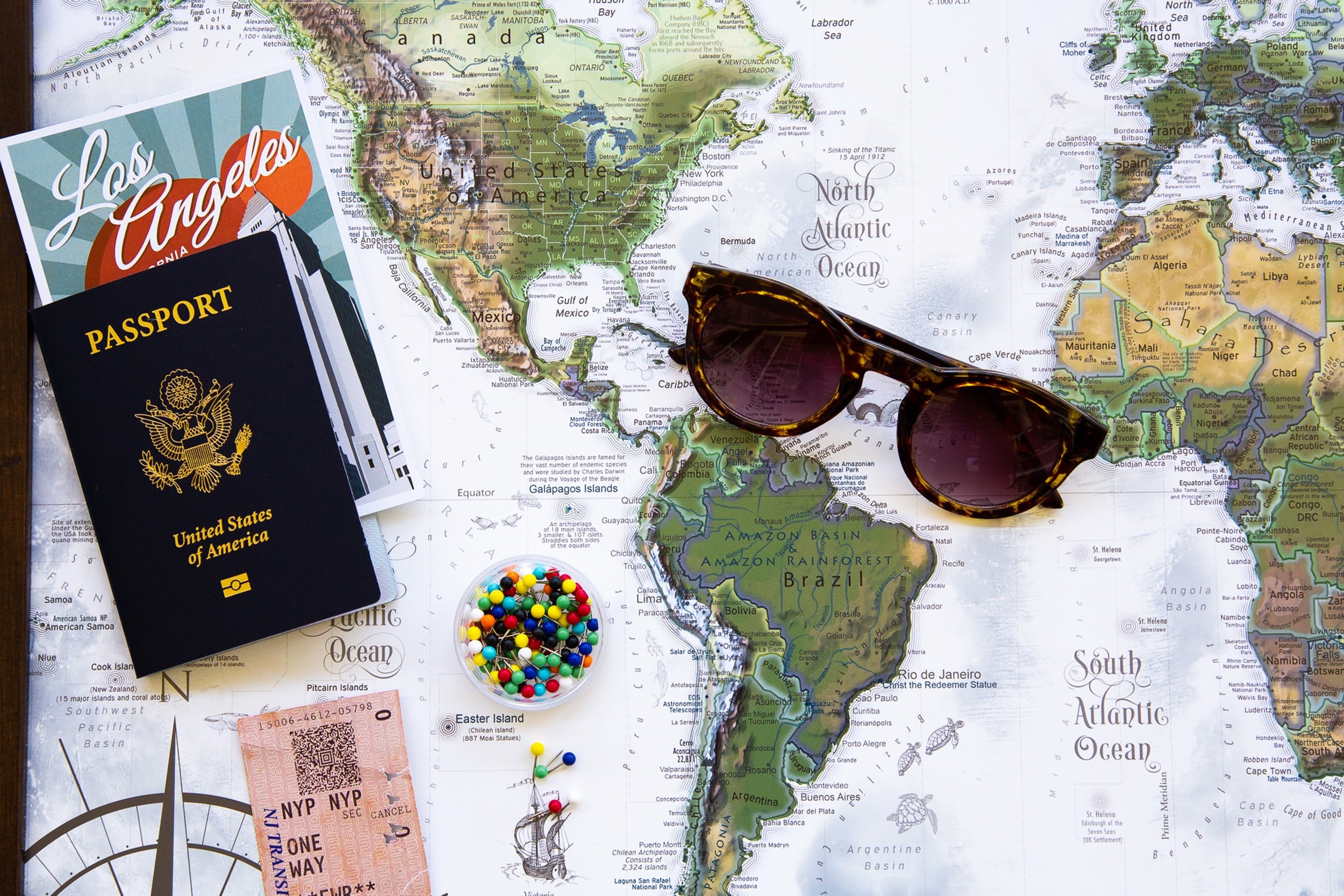How Much Does it Cost to Study Abroad? Everything You Need to Know
/For most international students, cost is by far the biggest barrier to studying abroad. A quick calculation of course fees, accommodation, and other related expenses can turn the firmest of study abroad plans into a pipe dream.
The good news for aspiring travelers is that there are now more options than ever when it comes to studying abroad. With enough research and a razor-sharp budget, you’ll be able to find an enriching study program that fits your finances.
To that end, we’ve put together an exhaustive list of all the costs you to need consider and provided guidance on how to create a watertight budget for your trip. Careful financial planning is key to getting the most mileage (literally and figuratively) out of your study abroad experience!
The Costs of Study Abroad
According to research from the International Institute of Education, the average cost of studying abroad is $18,000 per semester and $36,000 for the full academic year. These are very rough estimates, and costs will vary widely based on your country and program of choice.
Below, we break down the different expenses that make up the total cost of studying abroad. Use these as a starting point for your budgeting.
Program Fees
Likely to be the biggest expense of your study abroad experience, program fees can range anywhere between a couple of hundred dollars to $40,000 for a full year. The fee depends on several factors, including the length of study, the status of the provider, and the program itself.
Some countries have excellent public education systems and charge international students very little. Where private institutions abound, such as in the US, UK, and Australia, costs are likely to be much higher.
Make note of any additional fees and always check to see if you’re eligible for financial aid in the form of travel grants and scholarships. If you’re unable to afford a semester-long placement, consider a short-term study abroad program at a more manageable price.
Accommodation
Some study abroad programs include accommodation in their upfront costs, providing a homestay or other living arrangement (often with meals included) as part of the package. Where this isn’t the case, rent is likely to be one of your biggest expenses after the program fee.
If accommodation isn’t offered in your study abroad program, you should begin looking for places to rent as early as possible — your study abroad provider will be able to help you with this. Sites like Nestpick and Housing Anywhere can also be used to assess the rental market.
If you’re looking for estimates to factor into your budgeting, Numbeo provides average rent prices for different types of property across more than 10,000 cities around the world.
Living Costs
With rent and tuition covered, your next step is to work out a daily budget for things like food, drink, mobile phone charges, and other related expenses. Research the cost of living in your chosen destination using Numbeo and budget accordingly based on your personal needs.
It’s also advisable to earmark some money for ongoing, miscellaneous support. Try not to be too stringent with your budget; running out of money for daily living costs will quickly turn any study abroad experience sour.
Travel Costs
Travel-related expenses can be divided into three key areas:
Visa costs
Flight tickets
Day-to-day transport
Travel visas may be necessary for trips exceeding 90 days. They generally cost around $160; you can find the precise price for your destination on the US Department of State’s website.
Some study abroad programs will include flights as part of the package, but in most cases you’ll need to arrange your own tickets for arrival and departure. Costs vary depending on how early you book as well as the length of the journey, but you’ll probably need to budget at least $1,500.
You’ll also need to factor in daily travel expenses. Research the costs of buses, trains, and taxis in your chosen destination and budget accordingly. If you’re planning any sightseeing trips or visits home, you can account for these expenses in this part of the budget.
Insurance
Travel insurance for things like theft, medical emergencies, and natural disasters should not be forgone. An insurance plan with wide coverage will provide priceless peace of mind and allow you to fully immerse yourself in the trip.
Insurance may already be included in your program’s pricing; make sure to check this. Otherwise, comparison websites like travelinsurance.com can help you find a good deal, with basic packages starting at around $30 for short stays.
Medical Expenses
Some countries require you to have certain medical tests and immunizations before you travel and enroll in your study program. These may be accessible for free depending on where you’re based, or they could incur a relatively small fee.
Working Out Your Study Abroad Budget
Let’s recap. Your study abroad budget will consist of:
Program fee
Accommodation (if applicable)
Travel costs
Living costs
Insurance
Medical expenses (if applicable)
Below, you’ll find a step-by-step guide to working out a bulletproof budget.
1. Add Tuition, Insurance, and Medical Expenses Together
The costs associated with tuition, insurance, and any medical expenses are all one-off fees and should, therefore, be easy to tally up as a starting point.
For the purpose of this guide, let’s say that you’re planning a semester abroad in São Paulo. You find that your program fee is $3,500, while travel insurance and a mandatory Diptheria vaccination set you back $150 and $30 respectively. That’s $3,680 to start with.
2. Work Out Accommodation Costs
If your chosen program doesn’t provide accommodation, the next step is to set aside some money for rent. Using a site like Numbeo, estimate your accommodation costs based on your location and length of stay.
Let’s continue our example. During your semester in São Paulo, you need somewhere to rent for four months. Based on cost of living data, a one-bedroom apartment in the city center is likely to cost around $600 per month, so you set aside $2,400 for accommodation.
3. Calculate Travel Expenses
Start with your travel costs by checking if you require a student visa. Afterward, use a comparison website like Skyscanner to estimate the price of your flights, and remember to factor in any trips home you may wish to make during your time abroad.
This is where things get a little tricky. Based on your location and appetite for travel beyond your placement, set aside some money for day-to-day transport, using localized cost of living data to gauge the prices of buses, trains, and other transport links in your chosen destination.
Here’s how our student in São Paulo budgets their travel expenses:
Visa: pays $135 for a Brazilian VITEM IV student visa
Flights: allocates $3,000 for two return flights to São Paulo, which includes one trip home during the semester
Daily travel: averages day-to-day transport costs as $5, which works out at around $600 for the semester
Altogether, that’s $3,735 for travel expenses.
4. Budget Living Costs
Last but not least: your daily living costs. Here, you’ll need to account for food and drink, clothes, phone bills, and other optional costs like souvenirs or a gym membership. Again, use recent cost of living data to make the most precise estimates.
For your stay in São Paulo, let’s say you set a daily allowance of $15 for food and $10 for other expenses. Across the semester, that amounts to around $3,000.
5. Tally It Up
All that remains is to add your separate costs together. Here’s our example of a semester in São Paulo:
Program fee: $3,500
Accommodation: $2,400
Travel costs: $3,735
Living costs: $3,000
Insurance: $150
Medical expenses: $30
Total cost = $12,815
This is a very rough guideline and has only been used to demonstrate the budgeting process. When calculating your own expenses, it’s always best to overestimate costs and leave some extra money available for emergencies.
Affordable Alternatives to Semester-Long Study Abroad Programs
Studying abroad for a semester or full academic year is expensive. If you feel priced out of an international university placement, short-term study abroad programs led by third-party providers like Learn from Travel offer a more affordable alternative.
Our immersive programs provide all the cultural benefits of semester-long study within a more manageable two-week timeframe, and at competitive rates that don’t require years of saving. Take a look at some of our sample programs here.
Study Abroad is for Everyone
The wealth of study abroad opportunities available means it’s never been easier to find a program befitting your budget. And with life-changing experiences, professional development, and new friends all awaiting you on your travels, it’s likely to be money well spent!
Are you interested in culturally-immersive travel but have concerns about the price? Contact us to enquire about our affordable short-term study programs and begin your adventure today.



























